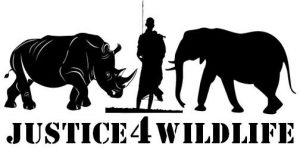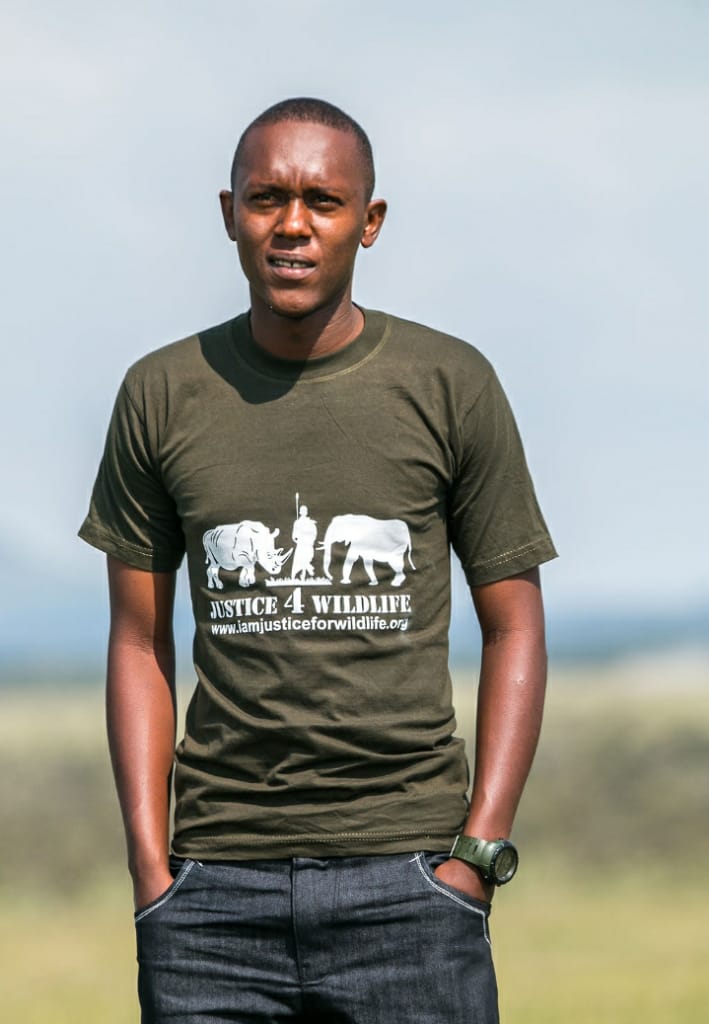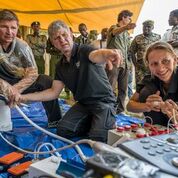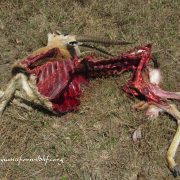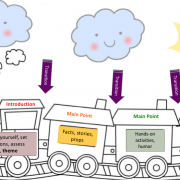Conservation education always sounds easy “talking about the advantages and importance of conserving the environment” anyone can easily do it until you find yourself in front of a group of rowdy incorporative pupils, then you’ll realize its never that simple.
I recently attended the Northern Kenya Conservation Education Working Group (NKCEWG) workshop which expounded my interpretive skills, got practical solutions on how best to improve public speaking skills which I believe will be of immense value to you.
Icebreakers and Attention Getters
Icebreakers and attention getters are important to capture attention at the beginning of a lesson and throughout the program. An introduction sets students up for success by communicating the agenda, goals, and tone for the program. It builds interest in the program content and establishes rapport with the audience. This can also be where you introduce your attention getters for the day so students know what to do when you use them.
Sample Introduction:
Warm greeting
Agenda for the day
The theme for the day
First set of instructions – limit to 3 things to do at a time
Introduce attention getters
Attention Getters:
“When I say Water, you said Shed!” “Water!”… “Shed!”
Repeat after me: clap 2 times, wait for kids to mimic clapping sequence. Repeat with various clapping patterns. Can do this with stomping, whistles, animal sounds, etc.
“Everyone catch a bubble in your mouth”- wait for students to puff cheeks out with mouth closed.
Listening check: “If you can hear me touch your head.” Wait for students to touch their head. “If you can hear me cross your fingers.” Etc.
Knowing Your Audience
Relate to your audience based on their needs, to keep engagement and set students up for success. Build rapport with them from the beginning. When engaging your audience, remember:
RMP – Relevant, Meaningful, and Personal.
Various Student Ages
- Adults: Can only handle 7 +/- 2, relates back to themselves, change is tough- help make it easier, use various methods to teach (like kids!). Don’t forget to use humour. Challenge them, or include teamwork.
- Preteens – teens: What others think about them is important. They can only handle 5-7 pieces of info at a time. Their brains are still developing – starting to understand generalization, deductive reasoning, and problem-solving. They are learning to think about abstract concepts. Use visuals, and a structured program is helpful. Remember different learning styles when engaging this group.
- Ages 5-9: There can be a lot of self-doubt at this age. Engage both the body and the mind at the same time when teaching. They are developing better motor control. More self-centred thinking. Be clear and direct, very short instructions, short attention span/mix it up, can use puppets and games, be fun and silly, use Total Physical Response (TPR): adds physical movement in with language. Using physical movement to react to verbal input: reduces student inhibitions, lowers effective filter.
Coaching Styles – Which One Are You?
- Teacher
You are an expert in the field and coach by instruction, giving feedback, and demonstrating skills. You work from your knowledge and experience and focus on skill-based issues like performance skill. You coach on an ongoing basis over an extended period to build a broad but specific skill set. You often create development programs that lead coachees through a sequence of learning steps over time
2. Parent
You are committed to the long-term development of the coachee. You take a directive approach because of your hierarchical position or superior knowledge base. You may know better than your coachees, but your goal is to help coachees achieve equal status and effectiveness.
You are prone to giving career advice and take a strong interest in the coachees growth along many dimensions. You typically coach over an extended period of time and see coachees evolve significantly.
3. Manager
Your job keeps you very busy so you coach only in response to a specific need, focusing on the isolated skill or task you think needs improvement. You typically have a hierarchical relationship with the people you coach.
Your experience and expertise often make you more knowledgeable than coachees, so you tend to make performance observations, give feedback, and set expectations. You expect to see short term improvements.
4. Philosopher
You interact with your coachees only occasionally, and when you do, you are mainly concerned with the development of the whole person. Your guidance comes from a position of superior knowledge, expertise, or moral certitude – though your advice is not typically spiritual in nature. You often coach by telling stories or relating experiences from your own life. You enjoy using “words of wisdom” to assist coachees.
5. Facilitator
You have a long-term interest in helping coachees develop, and you focus on specific skill-based growth needs. You are often more highly skilled than coachees, but prefer that coachees work through issues themselves. You see your goal as helping others help themselves, and you refrain from giving advice or exercising authority. Often you are a team member or peer of those you coach and have a mutual coaching relationship.
6. Counsellor
You take a broad view of your coaching responsibility and strive, through a series of regular sessions, to help coachees develop the full spectrum of their capabilities. You believe in self-development, so you are encouraging and supportive, but refrain from telling coachees what they should do. You may not always be a subject matter expert and not necessarily has highly skilled where coachee wants help. Your role is to guide others through self-discovery.
7. Colleague
You often have a peer relationship with the coachee, and your preferred mode is to act as a thought partner or sounding board for your coachee. You generally coach only when asked, and focus entirely on specific skill-based needs. You may tell a coachee how you have done something previously, but you mainly coach by asking questions, listening, and thoughtfully responding to questions in order to help coachees solve problems for themselves.
8. Mentor
You serve primarily in an advisory role. You are generally older and far more experienced than the coachee, and you act as more of a shepherd – gently guiding in the right direction, choosing questions to help others discover a path
for themselves. You coach by example, setting a model with your own work and life. You coach infrequently because of your position or stature, but your coaching is likely to be very impactful.
Adapted from Effective Coaching (Bacon,1997)
“For most of history, man has had to fight nature to survive. In this century he has to realize that in order to survive he has to protect it.” Jacques-Yves Cousteau Here we celebrate the unsung wildlife heroes in the grassroots doing remarkable work to conserve our wildlife heritage, Get to learn about wildlife from a ranger/ ecologist in Kenya a freelance eco-traveler, experience the diverse cultures and African heritage from the natives and take an adventure to new destinations to learn about rare attractions that are hardly talked about and to top it all up some of the best wildlife photographs that will make you reconnect to your wild side appreciate everything around us and fall in love with the natural world, because “It is not enough to love the natural world; the point is to defend and preserve it.” Edward Abbey
Our wildlife, our responsibility. When it comes to standing up for our wildlife it’s better to be outspoken than unspoken.
